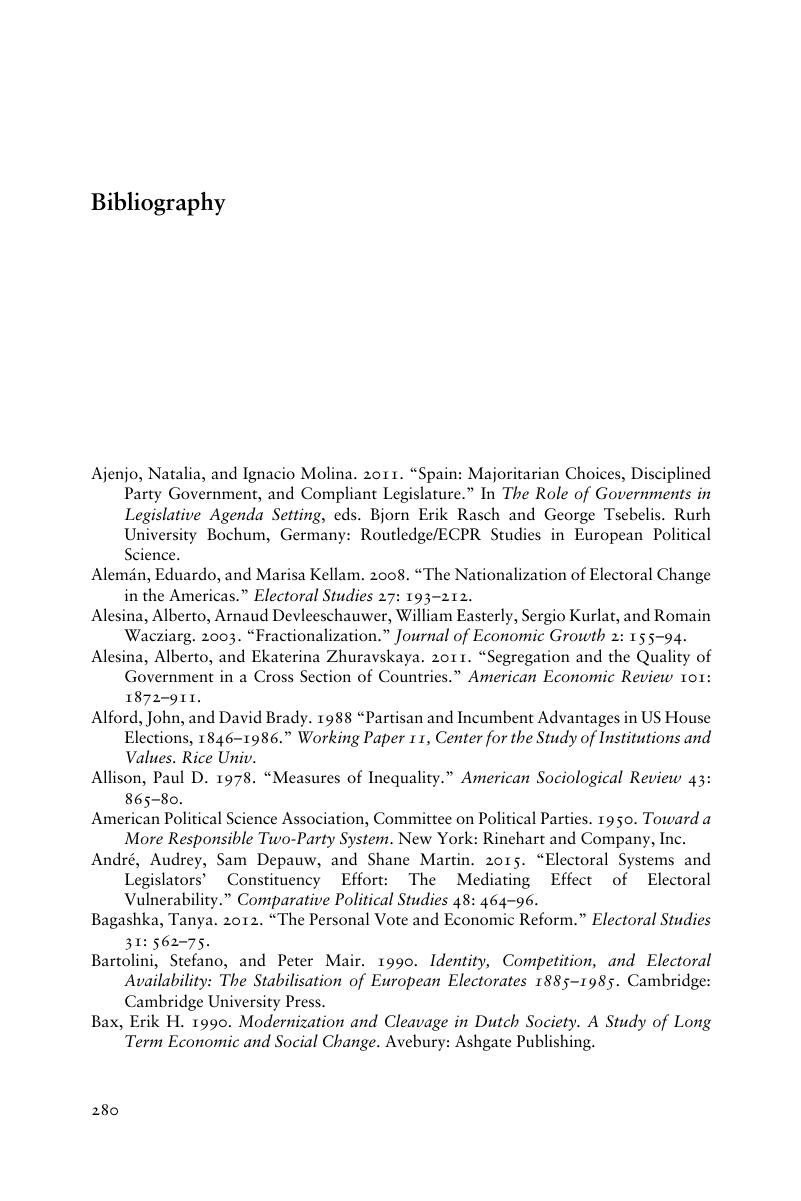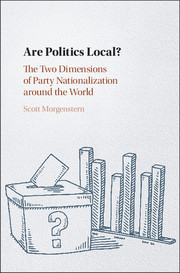Book contents
- Are Politics Local?
- Are Politics Local?
- Copyright page
- Contents
- Figures
- Tables
- Acknowledgments
- Part I Describing, Measuring, and Comparing the Two Dimensions
- Part II Explaining Party Nationalization
- Part III Implications: Nationalization as an Explanatory Variable
- Part IV Conclusion
- Appendices
- Bibliography
- Author Index
- Subject Index
- References
Bibliography
Published online by Cambridge University Press: 31 October 2017
- Are Politics Local?
- Are Politics Local?
- Copyright page
- Contents
- Figures
- Tables
- Acknowledgments
- Part I Describing, Measuring, and Comparing the Two Dimensions
- Part II Explaining Party Nationalization
- Part III Implications: Nationalization as an Explanatory Variable
- Part IV Conclusion
- Appendices
- Bibliography
- Author Index
- Subject Index
- References
Summary

- Type
- Chapter
- Information
- Are Politics Local?The Two Dimensions of Party Nationalization around the World, pp. 280 - 291Publisher: Cambridge University PressPrint publication year: 2017



